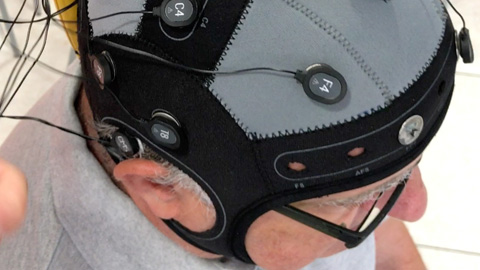Dynamic and chaotic audiovisuals increase spectator attention, but inhibit conscious processing

08/11/2018
Scene changes inhibit a spectator's blink rate, thus increasing their attention. It also produces a flow of brain activities from the occipital lobe towards the frontal lobe. These are the conclusions reached by researchers from the Universitat Autònoma de Barcelona and the Pablo de Olavide University, Sevilla. The study, recently publishd in the journal Neuroscience, deals with what happens after the scene changes from a triple approach: frequency in blinking, electric activity in the brain and functional connectivity associated with the brain.
The research also concluded that the editing style influences a spectator's perception. Scene changes presented in a dynamic and chaotic style, such as video-clips, produce more activity in the visual processing areas when compared to more continuous and orderly scene changes. Likewise, the activity in frontal areas in charge of more complex processes is superior when the editing style is more continuous and orderly.
After analysing brain synchronisation associated with scene changes, researchers concluded that the active brain networks are more intence after a scene change than before. From the point of view of synchronisation, there is no difference associated with the editing style.
Previous studies conducted by the same team had demonstrated that the editing style affected the blink rate of spectators. In this new paper, researchers conducted a detailed analysis of what occurs in the immediate second after a scene changes according to the editing style.
Participating in the research were professionals from Ràdio Televisió Espanyola (RTVE), coordinated by the Institut RTVE. The research was developed by Celia Andreu-Sánchez and Miguel Ángel Martín-Pascual from the Neuro-Com Group of the Department of Audiovisual Communication and Advertising, Universitat Autònoma de Barcelona, and by Agnès Gruart and José María Delgado-García from the Neuroscience Unit of the Pablo de Olavide University, Sevilla.
Original article:
Andreu-Sánchez, C., Martín-Pascual, M.Á., Gruart, A., Delgado-García, J.M. Chaotic and fast audiovisuals increase attentional scope but decrease conscious processing. Neuroscience, 394 (2018), 83-97. https://doi.org/10.1016/j.neuroscience.2018.10.025